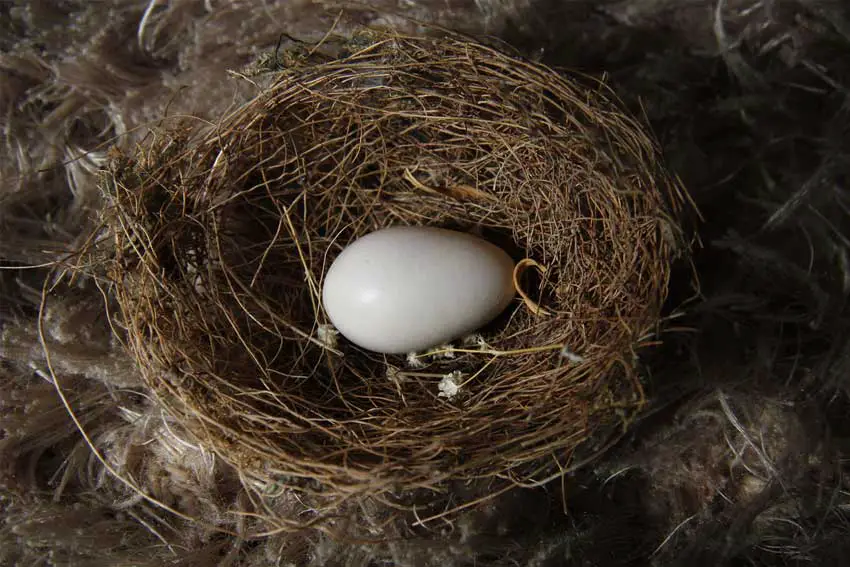It can be startling to be digging in your garden and uncover a mysterious large white egg buried in the soil. If you don’t have chickens, ducks or other egg-laying animals, you may wonder where this egg came from and what you should do about it.
Finding a buried egg in your garden soil could be harmless, or it could potentially signal some unwelcome wildlife activity. This article covers how to identify the type of egg, whether it poses any risks, and what to do if you find one.
Possible Sources of a Buried Egg
There are a few possible explanations for an egg discovered buried in your garden:
-
Abandoned bird egg – Birds sometimes lay eggs in odd spots if scared off their nest or when dumping an unfertilized egg. Pheasants, turkeys, grouse and other ground-nesting birds are prime suspects.
-
Predator cache – Foxes, raccoons, snakes and other predators sometimes steal bird eggs and bury them to eat later. They may forget about the cache.
-
Reptile egg – Turtles and some species of snakes lay eggs in sandy soil or mulch The eggs are often white
-
Rodent egg cache – Rats and mice gather and hide food supplies to eat later. A buried egg may be part of their stash.
-
Insect egg case – The ootheca of some insects like cockroaches and mantises may resemble an egg when buried in soil.
Identifying the Egg
To identify the type of egg found, look for these clues
-
Size – A very large egg over 2 inches long likely belongs to a bird like a pheasant or grouse. Smaller eggs under an inch may be songbirds, snakes or rodents.
-
Shape – Bird eggs are symmetrically oval. Reptile eggs may be more elongated. Insect cases are bean-shaped.
-
Shell texture – Bird eggshells are hard and smooth. Reptile or insect eggs may have a leathery, softer shell.
-
Color – Pheasant and other bird eggs are solid white. Reptile or insect eggs may have speckles or other coloration.
-
Nearby signs – Look for tracks, feathers, nests or other clues to help identify the egg layer.
Carefully inspect the egg without disturbing it too much before attempting removal or destruction.
What to Do With a Buried Egg
If you believe the buried egg is from a native wild bird or reptile, the best option is to leave it untouched. Moving or damaging the egg is illegal. The parents may return, or it may have been abandoned naturally.
However, if the egg appears damaged, incubated or shows signs of predation like holes, cracks or chewing, removal may be warranted. Buried eggs can attract unwanted scavengers. Raccoon or rat caches should be tossed out.
For any eggs suspected of belonging to non-native invasive reptiles, removal and destruction is recommended. Report findings to local wildlife authorities.
As a precaution, wear gloves when handling unidentified eggs in case they contain bacteria or other contaminants.
Monitoring the area for additional activity over the following days or weeks may help reveal the source. Try setting up a wildlife camera focused on the spot where the egg was found.
Discovering a mysterious egg while gardening can be puzzling and concerning. With some careful identification and monitoring, the source should become clear. Most often, buried eggs in gardens are nothing to worry about. But it’s still wise to identify and dispose of any that could present risks to your garden’s safety and biodiversity.

Digging Up a Mystery Egg That I Buried in My Giant Rainforest Vivarium
FAQ
What animal lays large white eggs on the ground?
What bird buries its eggs in soil?
What animal buries its eggs in dirt?
What are the white eggs laid in soil?
Why is there a white egg buried in my soil?
Sometimes when you are mowing grass in your garden or digging the soil to plant a seedling or mixing fertilizer in the ground, you may notice a large white egg buried in the soil.
What lays small white eggs in soil?
Other than skinks, snakes such as corn and king snakes deposit small, white eggs that resemble those of birds. What lays small clear eggs in soil? Slug eggs are thin, spherical, jelly-like ovules that are often translucent and lack any discernible color, as was previously described.
What if you find a white egg in your garden?
It is such a common issue for the gardener, oftenest they find large white eggs buried or laid in the ground. But you should be cautious if you find it in your garden; since it may be a domestic animal’s egg or even it may be a dangerous animal’s egg such as a snake or reptile.
Why do foxes Bury white eggs in the soil?
Most of the time, people fallen an odd incident when mowing grass or planting seedlings in their garden by getting a large white egg buried in the soil. Foxes or weasels have probably concealed it because they preserve their food under the ground.
What are the white ‘eggs’ in shop-bought potting soil?
The white ‘eggs’ in shop-bought potting soil are most likely to be pellets of slow-release fertiliser, or tiny polystyrene balls that are often used by commercial vendors to aerate soil and promote drainage. Daniel has been a plant enthusiast for over 20 years.
Where are grasshopper eggs buried?
Grasshopper eggs are typically buried in the soil and may be found in clusters. Beetles and their eggs can vary in appearance, but they are usually small and oval. By identifying these common insect eggs, you can implement targeted methods to control pests in your garden and ensure the health and beauty of your plants.
- A Complete Guide to Caring for Yuki Cherry Blossom Shrub - January 23, 2025
- Identifying Red Hot Poker Seeds: What to Look For When Harvesting Torch Lily Pods - January 23, 2025
- A Complete Guide to Harvesting Evening Primrose Seeds - January 23, 2025
